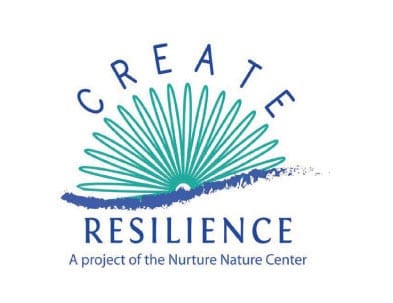I’ve heard a lot of jokes and comments about 2020’s seemingly endless barrage of threats and bad news, comparing this year to the biblical plagues or remarking that it feels impossible for so much to have happened in so short a time. In one example of this, the East Coast recently experienced tropical storm Isaias in between periods of dangerous heat and humidity as the COVID-19 crisis continues. Each of these events pose risks to people’s lives and well-being, and when they all occur at the same time the danger increases and effective responses become more difficult.

Ken Graham, director of the National Hurricane Center, wears a mask while providing a forecast for Tropical Storm Isaias, illustrating the simultaneous effects of the pandemic and weather-related hazards this summer.
This article from Harvard’s School of Public Health dives into those challenges, describing how “extreme weather events, made more frequent and intense by climate change, make it more difficult to maintain physical distancing, exacerbate coexisting conditions, and disrupt health care services, threatening efforts to contain transmission and improve outcomes of COVID-19.” It’s important to note that we’re not just getting unlucky this year, but we can expect to continue to see a larger number of extreme weather events as a result of climate change. Although there won’t be a pandemic every year, other hazards are sure to occur and will also be affected by those extreme weather events.
Since responding to multiple hazards simultaneously will continue to be the reality we face, what do we need to do to prepare?

Short term strategies to keep people safe could include wearing masks in cooling centers or emergency shelters and preventing water and electricity shutoffs in people’s homes. Image from EDF.org
The Harvard article focuses on extreme weather events and extreme heat in the context of the pandemic and recommends both short and long term actions to respond and become more resilient. In the short term, they focus on how local and state agencies can improve communication, make emergency shelters safer with regard to COVID-19, and prevent water and electricity shut offs so people can remain in their homes during heat waves. These types of strategies can help keep people safer and healthier in the coming weeks and months, responding to the difficult situation we are already facing.
Longer term strategies can help us be more prepared in advance of future hazards, reducing the severity of the impacts they will have. When we think about being more prepared for converging hazards, we can look at infrastructure investments, availability of funding, and mitigating the causes of the problems. This could include some of the recommendations made in the article, such as
- Strengthening our health care infrastructure and delivery systems to ensure resiliency
- Creating sustained reductions in the use of fossil fuels to reduce the risks for multiple medical conditions by improving air quality
- Tackling extreme heat by expanding green space and making more roofs white
- Prioritizing federal and state funding for mitigation plans

Some of the climate-related hazards that will continue to amplify one another in future years are depicted here. Long term strategies can make our communities more prepared for these conditions. Image from CDC.
It’s also important to note that, as the article mentions, extreme weather events and the other hazards they may interact with impact low-income and communities of color at a greater rate and more severely than they impact wealthier places. For example, neighborhoods with a greater percentage of people of color have less green space and fewer trees on average, and when people in those neighborhoods also can’t afford air conditioning, heat becomes much more dangerous. Those neighborhoods are also more likely to be exposed to polluted air, resulting in a number of respiratory conditions that make people more susceptible to COVID-19. When these hazards coincide, people who are more susceptible end up having to go to cooling centers to get out of the heat, risking contracting the virus, or stay in their homes to avoid the virus and risk heat-related illness or death. If we are going to build resilience and reduce the harm that these hazards cause everywhere, our preparations and response will look different in different communities.
While it feels intimidating to know that we’re going to have to be prepared for a wide variety of hazards that may occur at the same time, it’s also encouraging to know that there are strategies that can increase resilience across the board. Checking on neighbors, seeking out information from local authorities and experts, and community-level efforts to reduce greenhouse gas emissions are all things we can do to address many hazards at once.
 You can investigate what programs the Lehigh Valley, your municipality, and the state of Pennsylvania are pursuing with regard to preparedness in the regional or state hazard mitigation plans, or by participating in Nurture Nature Center’s CREATE Resilience project. Early this fall we will be holding virtual community forums to facilitate a dialogue about hazard mitigation strategies and map areas of opportunity and concern in our local community. We can learn from our current situation of experiencing multiple hazards at once and build up our supportive knowledge and resources so that even when hazards occur in the future, we can protect ourselves and our families, our neighbors, and our communities.
You can investigate what programs the Lehigh Valley, your municipality, and the state of Pennsylvania are pursuing with regard to preparedness in the regional or state hazard mitigation plans, or by participating in Nurture Nature Center’s CREATE Resilience project. Early this fall we will be holding virtual community forums to facilitate a dialogue about hazard mitigation strategies and map areas of opportunity and concern in our local community. We can learn from our current situation of experiencing multiple hazards at once and build up our supportive knowledge and resources so that even when hazards occur in the future, we can protect ourselves and our families, our neighbors, and our communities.
